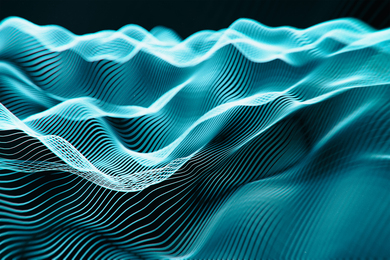CAMBRIDGE, Mass. -- A nationwide study of voting systems by the Caltech/MIT Voting Project reveals that paper ballots, optical scanning devices and lever machines are more efficient than punch-card and ATM-like electronic systems.
The study focuses on so-called "undervotes" and "overvotes," which are combined into a group of uncounted ballots called "residual votes." These include ballots with votes for more than one candidate, with no vote, or that are marked in a way that is uncountable. The residual voting rate for the first three systems averages about 2 percent, and for the last two systems about 3 percent.
"One important caveat is in order in this analysis," the 11-page preliminary report says. "There are errors that we cannot count. There is no way to measure whether voters accidentally cast ballots for the wrong candidate. And we know of no statistically acceptable measure of fraud."
The findings were submitted to the task force studying the presidential election procedures in Florida, which subsequently voted to replace punch card voting with optical scanning devices.
This study, the most extensive analysis ever of the effects of voting technology on under- and overvotes, covers the entire country for all presidential elections since 1988, and examines variations at the county level. The analysis is complicated by the fact that voting systems vary from county to county and across time.
The statistical analysis found that electronic voting, as currently implemented, has performed less well than was widely believed. When a voting system is switched, say from lever machines to the ATM-like direct recording electronic devices (DREs), the number of residual votes may go up due to voter unfamiliarity with the new technology.
"Electronic voting technology is in its infancy and seems the most likely one to benefit significantly from new innovations and increased voter familiarity," the report says.
When the study is complete, it will encompass presidential elections going back to 1980, and will examine a finer breakdown of the different technologies, and a breakdown of residual votes into its two components: over- and undervotes. A final report will be released in June.
The Voting Project was created by Caltech president David Baltimore and MIT president Charles M. Vest in December. Faculty from both campuses immediately began collecting data and studying the range of voting methods across the nation in the hope of avoiding in the future the vote-counting chaos that followed the 2000 presidential election.
The report was written principally by MIT Professor Stephen Ansolabehere. Other MIT faculty involved in the project are Professors Steven Graves, Nicholas Negroponte, Ronald Rivest and Charles Stewart. The Caltech faculty are Professors Michael Alvarez, Erik Antonsson, Jehoshua Bruck and Thomas Palfrey.




